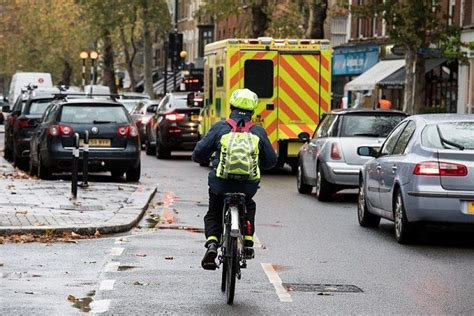Highlighting the importance of emergency vehicle visibility

Prestbury – The Ghostly Residents that you Might Spot there
November 5, 2021
Three Things that you Can Do to Get your Youthful Glow Back Again
November 12, 2021From a very young age, we are all taught to recognise and respond to emergency vehicles. You would think that with the sirens, flashing lights and reflective livery that road users and pedestrians would have no trouble detecting their presence and responding accordingly. Unfortunately, however, emergency responders are still too often hit by other motorists and even killed whilst carrying out their duties.
Back in 2009, a study into what could be done to improve visibility of emergency response vehicles identified some key areas:
- Retroreflective materials should be used on all response vehicles. Retroreflective means that when hit by a car’s headlights, they reflect light back. This helps to make emergency vehicles easier to see quickly by motorists during daylight or at night. Shapes are recommended that are easy to spot and these could include chevrons, triangles, stripes etc. Find out more about Chapter 8 regulations and visit PVL UK
- The best colours to use for this retroreflective material are fluorescent colours. These are bright, eye-catching and the best to use include yellows, oranges, reds and greens. This will further ensure that high visibility is achieved in both day and night situations.

- When using retroreflective materials, it is recommended to outline the vehicle with such markings as this makes it easier for the motorist to identify quickly what they are seeing as they approach. Without clear outlines, lights might seem to be floating and cause increased driver distraction. For this reason, edge markings are important.
- The location of said markings is also important as they should be positioned where they are most likely to be hit by the light of oncoming headlights. This normally means the lower sections of emergency vehicles and most notably, the rear of the vehicles for when parked facing the same direction as the flow of traffic.
- Rear end collisions have been reduced by 15% when the use of retroreflective materials has been applied to the back of response vehicles.
- It is a good idea to also use this material for logos so that motorists can instantly recognise which emergency response service they are approaching.
- Retroreflective markings are seen as a passive measure to help increase visibility whereas there are also active measures that are equally as important such as flashing lights and the use of sirens. The best approach is an approach that uses a combination of both passive and active conspicuity measures.

- It is possible to overdo the reflective markings which could interfere with a driver’s ability to recognise other hazards so finding the right balance between visibility and potential distraction is paramount.
- Incidences of collisions with emergency vehicles happen equally during the day and night, even though you would think that it is primarily a nighttime issue.
- The importance of visibility is even more crucial today than it was before as drivers are increasingly distracted by even more things, including GPS, entertainment systems and mobile phones!
Warning: Trying to access array offset on value of type null in /home/speakyma/public_html/checkyourhud.com/wp-content/themes/betheme/includes/content-single.php on line 286



